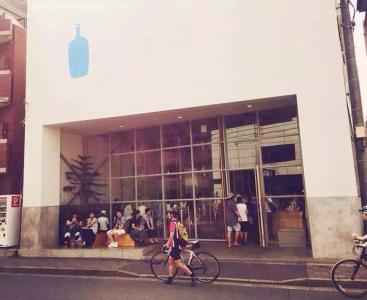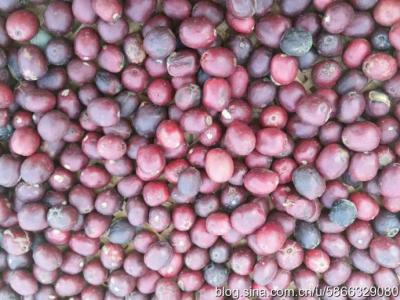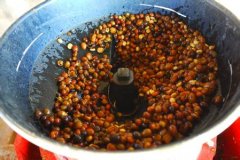The origin of grinding scale of coffee beans treated with Costa Rican honey
The origin of grinding scale of coffee beans treated with Costa Rican honey
Costa Rica in order to strengthen the export of high-quality coffee to Europe, America, Japan and other countries. Just began to vigorously develop high-quality coffee and increase the added value of coffee exports. At the same time, the government has set up a "coffee trust fund" to help coffee farmers in need tide over their financial difficulties and cultivate high-quality coffee.
Costa Rica is the country where coffee was first introduced into Central America. It has a long history and has a complete coffee organization from production to marketing system. Because it is located in the Central American Gorge, there are many volcanoes, it has the natural advantages of sunshine and land, and the climate is reconciled by Pacific and Atlantic currents and sea breezes at the same time, the coffee produced has the characteristics of local micro-climate and soil conditions, in terms of quality and quantity, Costa Rican coffee has always been recognized by the world, and has been rated as one of the world-class high-quality coffee. Costa Rican coffee has been cultivated for two hundred years. It was first planted on the slopes of the Poas and Barva volcanoes, today known as the Central Valley (Central Valley). The seven main coffee producing areas are from northwest to southeast, along with the inland central plateau.
Taste: the taste of imported melon is obvious, with a little nutty rhyme, the bitterness is very low, the acidity is general, the mellow thickness is general, and the cleanliness is good; after the cold, the sour taste is a little stronger, the latter part appears a little miscellaneous smell, similar to the fishy grass, and even a little rust. Sweetness is good.
Yellow honey: about 40% of the pectin is removed; the drying method requires the most direct heat absorption, receives the most light drying, and lasts for about 8 days to reach a stable water content.
Red honey: about 25% of the pectin is removed; it takes longer to dry than yellow honey, and reduces direct exposure to sunlight, even in shading sheds, lasting about 12 days.
Black honey: hardly remove pectin; dry for the longest time, lasting at least 2 weeks, with a cover to avoid too strong sunlight, prevent drying too fast, and make sugar conversion more fully.

Important Notice :
前街咖啡 FrontStreet Coffee has moved to new addredd:
FrontStreet Coffee Address: 315,Donghua East Road,GuangZhou
Tel:020 38364473
- Prev

Characteristics of Panamanian Cupid Coffee Grinding scale Flavor description of Manor Origin
The characteristics of Panamanian Cupid Coffee Grinding scale Flavor description of Manor Coffee Panamanian coffee has high traceability. Generally speaking, the coffee producing area of Panama can be traced to a single manor or even a part of the field that can be traced to the manor. The Panamanian Emerald Manor (La Esmeralda) is located at the corner of the Baru volcano, so the coffee beans produced in this area are not well known.
- Next

Description characteristics of Burundian Coffee Flavor brief introduction of hand-made temperature Grinding Calibration varieties
Brief introduction of Burundian Coffee Flavor description characteristics hand-made temperature Grinding scale varieties in recent years Starbucks has paid more and more attention to the African coffee industry and began to increase the price of Burundian Arabrica coffee with coffee growers in Tanzania, Ethiopia, Rwanda and Kenya. The purchase price of fresh coffee in Burundi has been adjusted from 120 Burundian francs / kg to 200.
Related
- Detailed explanation of Jadeite planting Land in Panamanian Jadeite Manor introduction to the grading system of Jadeite competitive bidding, Red bid, Green bid and Rose Summer
- Story of Coffee planting in Brenka region of Costa Rica Stonehenge Manor anaerobic heavy honey treatment of flavor mouth
- What's on the barrel of Blue Mountain Coffee beans?
- Can American coffee also pull flowers? How to use hot American style to pull out a good-looking pattern?
- Can you make a cold extract with coffee beans? What is the right proportion for cold-extracted coffee formula?
- Indonesian PWN Gold Mandrine Coffee Origin Features Flavor How to Chong? Mandolin coffee is American.
- A brief introduction to the flavor characteristics of Brazilian yellow bourbon coffee beans
- What is the effect of different water quality on the flavor of cold-extracted coffee? What kind of water is best for brewing coffee?
- Why do you think of Rose Summer whenever you mention Panamanian coffee?
- Introduction to the characteristics of authentic blue mountain coffee bean producing areas? What is the CIB Coffee Authority in Jamaica?

